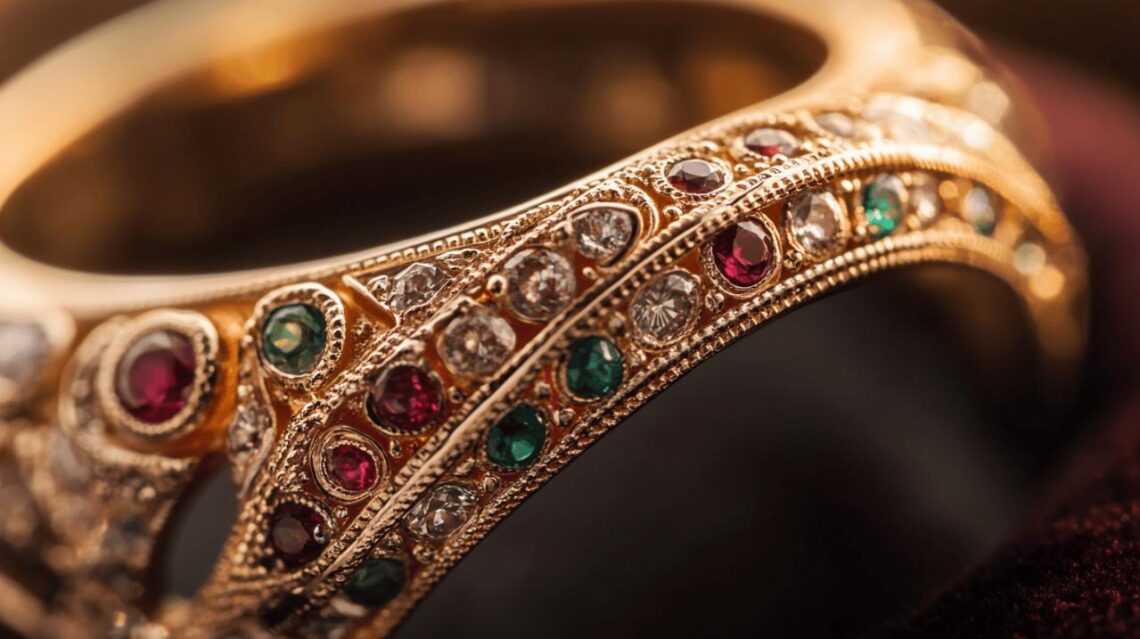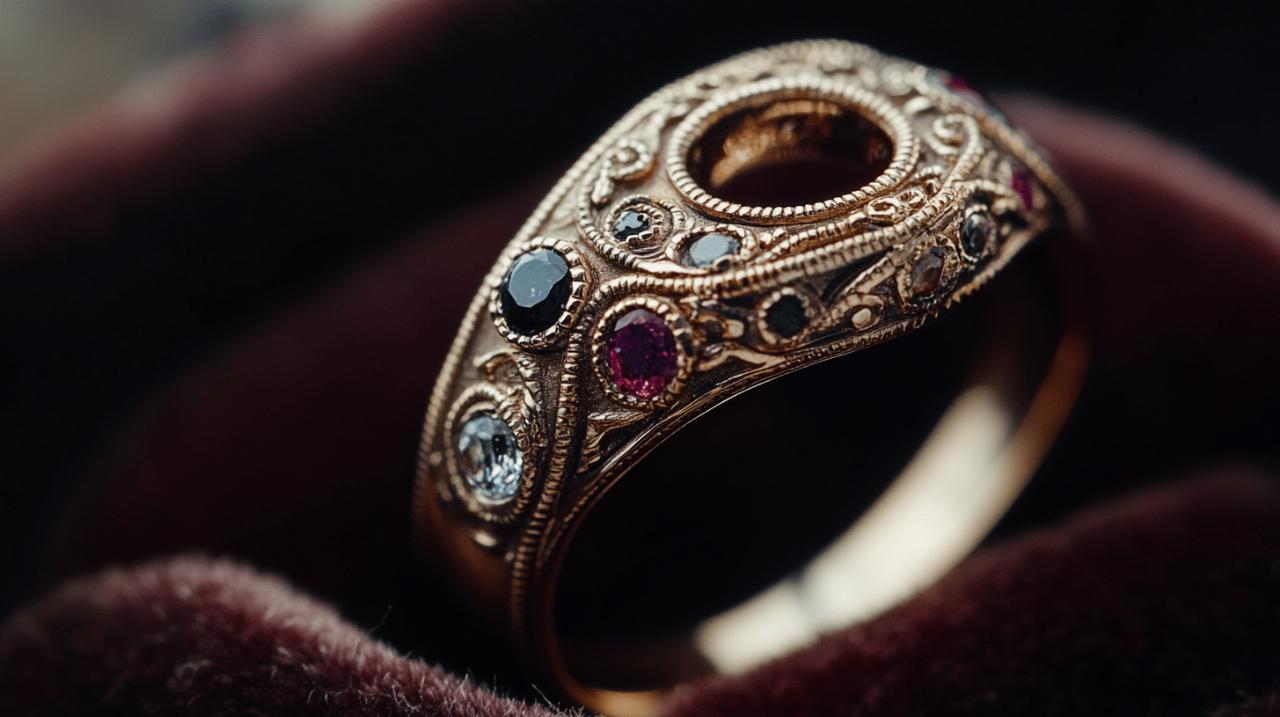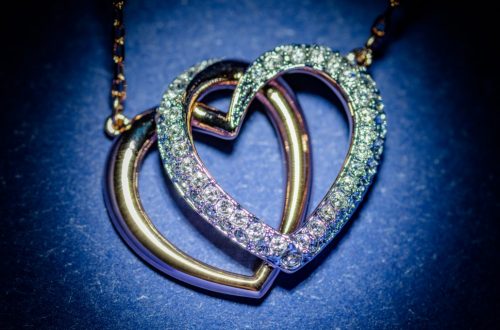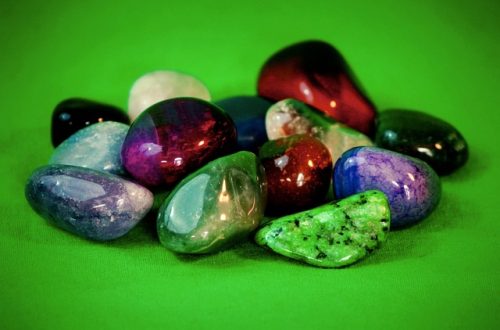
The Royal Origins of Bague Fer a Cheval: A Journey Through French Aristocracy
The Bague Fer a Cheval stands as a remarkable symbol of French heritage, deeply woven into the fabric of aristocratic tradition. This distinctive horseshoe-shaped ring carries centuries of noble lineage and cultural significance within its elegant curves.
Ancient horseshoe ring symbolism in french culture
French nobility embraced the horseshoe ring design from the earliest days of medieval society. The shape became a status symbol worn proudly at royal courts and grand gatherings across the realm.
Lucky charms among noble families
Noble families passed these rings through generations, believing they brought prosperity and fortune. Many French aristocrats wore them during significant ceremonies, from coronations to marriage celebrations. The practice spread through royal houses, making these rings coveted family heirlooms.
Sacred meanings behind the shape
The horseshoe form held deep spiritual significance in French culture. Many believed the upward-facing curve captured and held good fortune, while the precious metals used in crafting these rings represented purity and eternal bonds. Royal jewelers devoted countless hours to perfecting these symbolic pieces.
Royal Fashion Trends and Fer a Cheval Designs
French aristocracy shaped the world of fine jewelry through their exquisite taste and bold fashion choices. The Bague Fer a Cheval emerged as a distinctive symbol within noble circles, representing both status and sophistication. These horseshoe-shaped rings graced the fingers of society's elite, marking a significant period in jewelry craftsmanship.
Signature styles of french queens
The queens of France played a pivotal role in establishing jewelry trends throughout history. Each royal figure brought unique preferences to court fashion, influencing the design and popularity of specific pieces. The horseshoe ring design gained particular prominence during this era, becoming a cherished element of royal collections. These rings often featured precious gems arranged in the distinctive curved shape, creating stunning visual effects that caught light from every angle.
Evolution of court jewelry aesthetics
The transformation of court jewelry reflected changing artistic movements and cultural shifts within French society. Master jewelers developed innovative techniques to craft increasingly intricate horseshoe designs, incorporating diamonds, rubies, and sapphires. The style moved from elaborate Baroque interpretations toward more refined and elegant expressions over time. These pieces remained coveted symbols of refinement, worn during grand ceremonies and intimate gatherings alike.
Craftsmanship excellence in royal workshops
The illustrious history of French royal workshops stands as a testament to unparalleled artistry. These esteemed establishments served as creative sanctuaries where master craftsmen developed their extraordinary skills, producing magnificent jewelry pieces for the aristocracy. The Bague Fer a Cheval emerged from these prestigious settings, embodying the sophisticated tastes of French nobility.
Master jewelers of versailles
The skilled artisans of Versailles devoted their lives to perfecting the intricate art of jewelry making. Each master jeweler brought unique expertise to the creation of these symbolic rings, carefully shaping precious metals into graceful horseshoe forms. Their dedication to excellence resulted in pieces that captured both strength and elegance, making them highly sought after by royal patrons.
Precious materials and techniques
The creation of these distinguished rings involved meticulous attention to detail and superior materials. Master craftsmen selected the finest precious metals, often incorporating platinum and gold into their designs. The sophisticated techniques developed in these royal workshops included precise metal forming, delicate stone setting, and masterful finishing methods that created pieces of lasting beauty and significance.
Modern legacy of royal horseshoe rings
The Bague Fer a Cheval stands as a stunning emblem of French heritage, bridging centuries of aristocratic tradition with present-day luxury jewelry. These elegant horseshoe-shaped rings carry deep symbolic meaning, representing protection and prosperity while embodying graceful French craftsmanship.
Contemporary french luxury houses
Modern French jewelry maisons continue to honor the Bague Fer a Cheval tradition through exquisite interpretations. Master craftsmen blend time-honored techniques with innovative designs, setting precious gems in platinum, white gold, and rose gold. These pieces preserve the distinctive horseshoe shape while introducing fresh elements that appeal to modern collectors.
Collecting historic royal jewelry
The market for authentic royal horseshoe rings draws passionate collectors worldwide. These rare pieces appear at prestigious auctions, where enthusiasts seek rings with documented royal provenance. Private collections showcase these treasures alongside other noble jewelry, preserving their cultural significance and artistic legacy. Each ring tells a unique story of French aristocratic life, making them prized acquisitions for serious collectors.
Noble inheritance through generations
The Bague Fer a Cheval ring stands as a testament to French aristocratic heritage, representing centuries of noble traditions. These horseshoe-shaped rings graced the hands of countless aristocratic families, passing from one generation to the next. Each ring carried its own unique story, often marking significant moments in family histories and serving as powerful symbols of continuity and legacy within noble households.
Family heirlooms and traditions
Noble families treasured their Bague Fer a Cheval rings, treating them as sacred tokens of their lineage. These distinctive pieces became central to family ceremonies, from marriages to coming-of-age celebrations. Many aristocratic mothers would present these rings to their daughters upon their debut in society, marking their entrance into noble circles. The rings symbolized not just fortune and protection, but also the weight of family responsibility and the preservation of noble values.
Royal gifting ceremonies
The practice of gifting Bague Fer a Cheval rings became deeply embedded in royal court customs. During grand celebrations at Versailles and other royal residences, these rings would change hands in elaborate ceremonies. The presentation of a horseshoe ring from one noble family to another often sealed alliances, strengthened diplomatic ties, or commemorated historic occasions. Each gifting ritual followed precise protocols, reflecting the formality and grandeur of French aristocratic life.
Regal influence on modern collections
The exquisite Bague Fer a Cheval stands as a testament to French luxury craftsmanship, embodying centuries of aristocratic elegance. This distinctive horseshoe-shaped ring design emerged from the noble courts of France, where it garnered admiration among royal circles. The sophisticated curvature and precious gems that often adorn these pieces reflect the refined tastes of French aristocracy.
Royal design inspirations
The graceful arc of the Bague Fer a Cheval mirrors the grandeur of French palace architecture. Noble women embraced this ring style, viewing it as both a fashion statement and a symbol of good fortune. The design's enduring appeal lies in its perfect balance of sophistication and symbolic meaning, making it a coveted piece among jewelry enthusiasts.
Prestigious brand interpretations
Modern luxury houses have masterfully adapted this royal design heritage. Master jewelers now craft these rings using innovative techniques while maintaining their aristocratic essence. Each creation showcases meticulous attention to detail, from the selection of precious stones to the precise angle of the horseshoe curve, preserving the legacy of French royal jewelry traditions.
Marriage alliances and symbolic rings
The Bague Fer a Cheval emerged as a distinctive symbol within French aristocratic circles, representing both status and matrimonial bonds. These horseshoe-shaped rings gained prominence through their association with royal unions and diplomatic relationships. The craftsmanship behind these pieces reflected the sophistication of French jewelry artisans, who meticulously created these symbols of noble heritage.
Royal wedding traditions
French nobility embraced the Bague Fer a Cheval during wedding ceremonies, viewing these rings as powerful emblems of lasting unity. The horseshoe design symbolized protection and fortune for the royal couples. Noble families passed these rings through generations, establishing them as cherished heirlooms that carried the weight of ancestral marriages and alliances.
Diplomatic ring exchanges
Beyond matrimonial significance, the Bague Fer a Cheval served as a diplomatic tool among European royal houses. These rings became gifts during state visits and political negotiations, strengthening international relations. The exchange of these distinctive pieces created lasting connections between royal families, while their unique design made them instantly recognizable symbols of French aristocratic influence across European courts.





